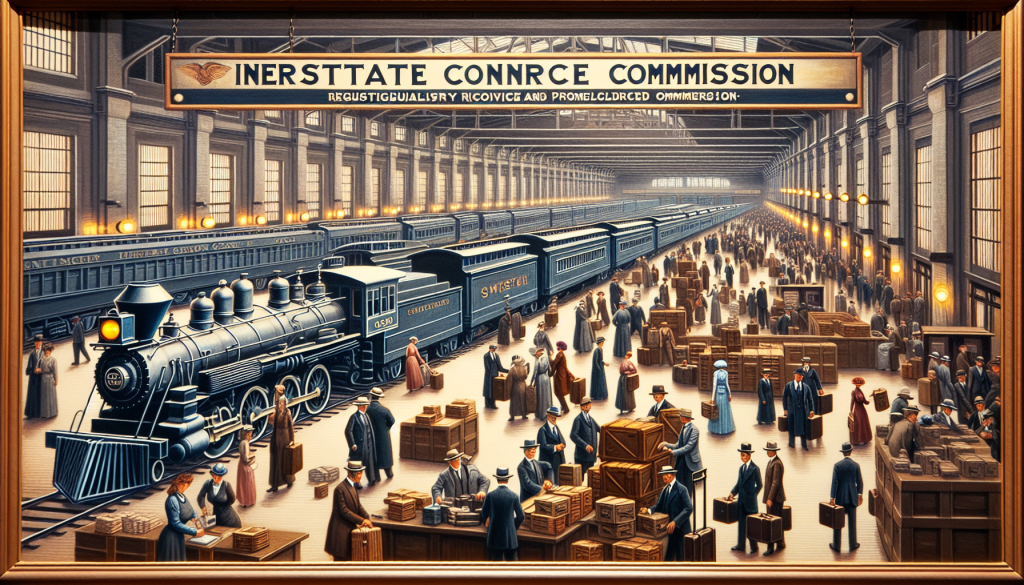
The Interstate Commerce Commission (ICC), established by the Interstate Commerce Act of 1887, holds a significant place in the history of U.S. regulatory bodies. Considered the first federal independent regulatory agency, the ICC emerged from growing public dissatisfaction with the railroad industry’s dominance and its unregulated practices during the late 19th century. Its mission was to oversee and regulate the railroad sector, ensuring fair rates, eliminating rate discrimination, and overseeing other aspects of common carriers. Understanding the legacy and impact of the ICC requires examining its transformative role in federal regulatory oversight, its successes, and its eventual dissolution.
During the Gilded Age, rapid industrialization and the expansion of the railroad network had dramatically reshaped the American economy. Railroads had become the lifeblood of the nation, essential for transporting goods and passengers across vast distances. Yet, this burgeoning industry was marred by issues such as monopolistic practices, exploitive rates, and preferential treatment of certain shippers. The need for federal intervention became evident as states struggled to effectively regulate an industry that crossed state lines.
The creation of the ICC marked a groundbreaking approach to federal regulation. It provided a framework for addressing interstate commerce issues, setting a precedent for future regulatory bodies. The commission was empowered to investigate railroad financial records, require reasonable and just rates, and hear complaints against carriers. It also played a crucial role in establishing uniformity by setting legal precedents for carrier practices, which laid the groundwork for America’s regulatory landscape.
One of the ICC’s most notable achievements was its influence over rate disparities and market fairness. Initially, the commission struggled with limited authority, as court rulings often sided with the railroads. However, subsequent legislative adjustments slowly expanded its powers. The Hepburn Act of 1906 was particularly pivotal, enhancing the ICC’s ability to set maximum railroad rates and extending its jurisdiction. This increased regulatory power allowed the ICC to more effectively ensure fairness and protect consumers against price gouging.
Beyond rate regulation, the ICC’s legacy includes its role as a prototype for modern regulatory agencies. By establishing principles of governmental oversight and administering justice in economic affairs, the ICC inspired the creation of future agencies that govern sectors such as communications, banking, and consumer goods. Its existence also fostered the public notion that the government should act as a steward of fair market practices, a view that resonates with today’s regulatory intentions.
However, the ICC’s influence and methods evolved throughout the 20th century. As automobiles, trucks, and airplanes emerged, the transportation landscape changed drastically. With the rise of newer forms of transportation, the ICC expanded its oversight beyond railroads to include trucking, bus lines, and even telecommunications. Despite this diversification, critics began to question the need for such extensive regulation, arguing that increased competition in these industries diminished the necessity for such intervention.
By the latter half of the 20th century, the efficiency and relevance of the ICC were openly debated. The regulatory climate shifted increasingly in favor of deregulation, spurred by claims that excessive oversight stifled competition and innovation. The Staggers Rail Act of 1980 and the Motor Carrier Act of 1980 were key legislative moves towards deregulation, granting carriers more freedom to set rates and enter markets, thus diminishing the ICC’s role.
Ultimately, the ICC was dissolved under the ICC Termination Act of 1995, effective the following year. Its functions and duties were transferred to the newly established Surface Transportation Board (STB), which was designed to oversee certain regulatory responsibilities with a leaner approach. The dissolution of the ICC marked an end to an era in regulatory history but left a lasting legacy that informs how we understand federal oversight today.
Even though the ICC no longer exists, its historical significance endures. As the first attempt at federal regulation of a key industry, it sparked a movement that emphasized government responsibility in maintaining equitable economic landscapes. The ICC helped set the stage for the complexities of modern regulation, demonstrating the delicate balance between government authority and market freedom. Understanding its legacy provides valuable lessons for navigating today’s regulatory challenges and underscores the evolving nature of commerce and governance in the modern world.